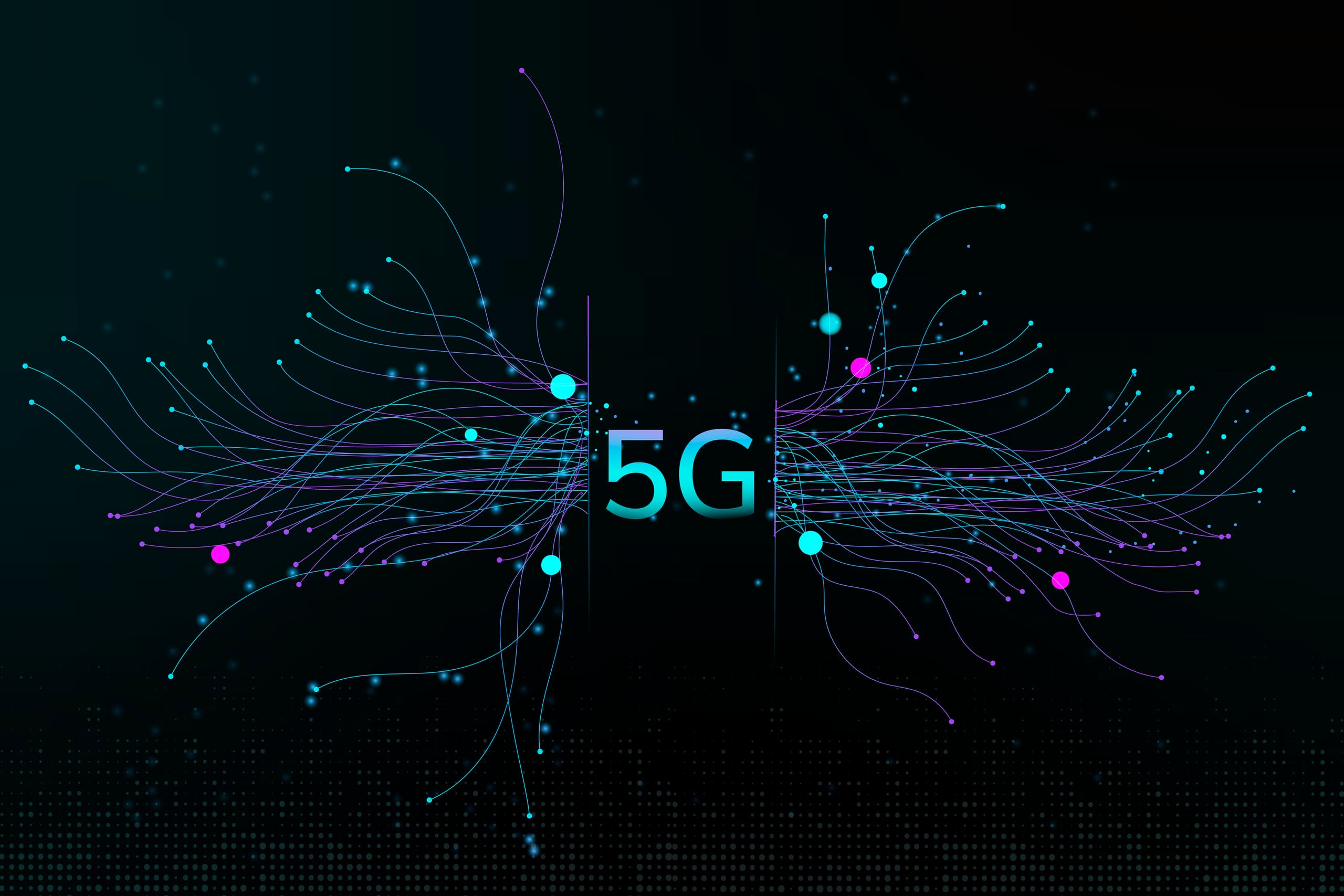
Introduction:
Hey there! Ever wonder how 5G, the super-fast new cellular network, is going to change things? It’s not just about quicker downloads; it’s a game-changer for everything from smart homes to self-driving cars. 5G is all about serious speed, low lag, and connecting way more devices than ever before. (Think of it as upgrading from a dirt road to a superhighway for your data—yet that superhighway also carries 5G Cybersecurity Challenges along for the ride.)
Now, with all this awesome connectivity and data-handling power, 5G is set to transform industries. However, these benefits arrive hand-in-hand with fresh 5G Cybersecurity Challenges. With more IoT gadgets, real-time data everywhere, and networks spreading out, we really need to get a handle on the potential security risks.
The Nitty-Gritty: How 5G Impacts Cybersecurity
More Doors for Attackers to Knock On
Imagine your home network, but now picture it with hundreds, maybe thousands, of smart devices—from your coffee maker to industrial sensors. That’s what 5G brings! Each one of these can be a potential entry point for a cyberattack. This huge increase in connected gadgets means a bigger “attack surface,” making it easier for unauthorized folks to sneak into networks and grab sensitive data. Consequently, when you’ve got a massive number of IoT devices, each one could be a weak link, so the cybersecurity needs to be really robust. In short, 5G Cybersecurity Challenges escalate as device counts soar.
Network Slicing: Super Cool, but Watch Out!
5G introduces something called network slicing. Basically, it lets different “virtual networks” run on the same physical infrastructure. Think of it like a highway with dedicated lanes for different types of traffic—one for hospitals, another for self-driving cars, and so on. While this is very efficient, it also has its security quirks. If one slice isn’t locked down properly, a problem there could spill over and affect others. Attackers might try to hit a weaker slice to get into more sensitive areas. Sneaky, right? As a result, Network Slicing Security becomes a mission-critical priority.
Supply Chain Headaches
Building out 5G infrastructure is a massive undertaking, and it involves hardware and software from several different companies. This diverse supply chain means there are many potential spots for security breaches. If a component from any part of the chain has a vulnerability, bad actors can exploit it. Governments and businesses really need to do their homework and thoroughly check their 5G vendors to avoid potential backdoors or compromised parts—otherwise, new 5G Cybersecurity Challenges will emerge.
DDoS Attacks Get a Turbo Boost
Because 5G is so fast and can handle so much data, it can actually make the DDoS attacks (where attackers flood a network to shut it down) way bigger and nastier. With 5G, cybercriminals can gather even larger “botnets” (networks of hacked devices) to swamp networks, causing significant disruptions. Additionally, with the increase in connected devices, DDoS attacks may become more challenging to mitigate.
Data Privacy: A Growing Worry
As the volume of data transferred across 5G networks grows exponentially, privacy risks also increase. Your sensitive personal and business data could be intercepted or misused if our encryption and security protocols aren’t up to the mark. Individuals and organizations need to use strong encryption and follow data privacy rules (like GDPR) to safeguard against breaches.
AI and ML: Our Cyber Superheroes (and Villains?)
As cyber threats get more complex, defending 5G networks needs increasingly sophisticated tools. Artificial Intelligence (AI) and Machine Learning (ML) are now essential for detecting anomalies, predicting potential attacks, and responding quickly to breaches. But the catch is that the attackers can also use AI to launch even more advanced and harder-to-detect attacks. It’s a bit of an arms race—one of the trickiest 5G Cybersecurity Challenges yet.
Guarding the Gates: How We Can Boost 5G Cybersecurity
Smart Network Segmentation & Slicing
Network Slicing is not just a potential problem; it’s also a solution! Operators can use slicing to build separate virtual networks for different uses. This isolation means that if one part gets compromised, the damage stays contained, making the whole network tougher to take down. It also allows for different security rules and resource management based on how sensitive each slice is. Therefore, bullet-proof Network Slicing Security underpins the entire strategy.
Stronger Encryption, Everywhere
With 5G handling vast amounts of sensitive data, powerful encryption is a must. Encryption scrambles information so that it can only be read by authorized parties, even if intercepted by cybercriminals. Since 5G moves data at lightning speed across a massive range of devices, it’s more vulnerable to interception. End-to-end encryption ensures data is safe from the moment it leaves your device until it hits its destination. Additionally, encryption protocols should be adaptable to handle different scenarios, such as device-to-device communication, ensuring comprehensive protection across various 5G use cases.
“Zero Trust” is the New Mantra
Traditional security models rely on securing the network perimeter, assuming that users or devices within the network can be trusted. But 5G’s open and spread-out nature makes that idea outdated. Zero Trust Architecture (ZTA) flips that script: it assumes no user or device can be trusted by default, no matter where they are. Every single user, device, and connection has to be continuously authenticated and verified. This is crucial in 5G environments, where IoT devices, remote users, and edge computing are prominent. By enforcing strict access controls, ZTA minimizes insider threats and stops unauthorized movement within the network.
AI-Powered Threat Detection and Response
Trying to manually monitor and respond to security threats in huge, complex 5G systems? That’s close to impossible! This is where AI and ML come to the fore. These smart systems can crunch massive amounts of network data, spot suspicious patterns, and flag potential security incidents before they cause real damage. They also learn from new threats and get smarter over time, becoming better at catching evolving attacks. With AI-driven solutions, 5G operators can tackle threats proactively, automate responses, and cut down the time it takes to fix problems, further mitigating key 5G Cybersecurity Challenges.
5G: The Good, The Bad, and The Connected
The Opportunities (The Good Stuff!)
• Better Security Built-In: 5G networks come with a range of advanced security protocols that include sophisticated encryption techniques for data that’s in transit or at rest, and improved authentication mechanisms to ensure that only authorized users and devices can access network resources. These better cryptographic methods and secure key management make for a much more robust security framework, helping to fix vulnerabilities and prevent unauthorized access or data breaches.
• Network Slicing: Yes, it has challenges, but it’s also a huge opportunity! Remember those virtual networks? They’re amazing for creating tailored services with their own security rules and quality of service. This means high customization, efficient resource use, better security through isolation, and optimized performance for crucial applications, provided Network Slicing Security remains tight.
• Edge Computing: Edge computing is a decentralized approach to data processing, where data is processed closer to its source, such as on IoT devices or local servers, instead of sending it all the way to centralized cloud data centres. This means less lag, real-time data analysis, a smaller attack surface by limiting data transmission, and support for apps that need instant responses (think self-driving cars or healthcare monitoring).
• Improved IoT Security: 5G’s speed and low latency significantly boost IoT device security. Faster communication allows for better encryption and authentication, and real-time monitoring means we can detect and respond to threats super quickly. This enhanced connectivity helps protect IoT ecosystems from all sorts of cyber trouble.
• Automated Security: Leveraging AI and advanced analytics, 5G can identify and respond to threats instantly. AI-driven systems continuously monitor data, spot anomalies, predict risks, and trigger rapid responses without human intervention. This means faster threat detection, proactive defense, scalability for huge networks, and cost efficiency.
The Challenges (The Not-So-Good Stuff)
• Bigger Attack Surface: The greater the number of connected devices and services greater is the attack surface. With a vast number of endpoints and a broader network infrastructure, there are more potential entry points for cyberattacks. Each connected device and system component introduces additional vulnerabilities that could be exploited. Securing a vast network with countless endpoints is a major task—and a classic 5G Cybersecurity Challenge.
• Network Complexity: 5G brings in new tech like network function virtualization (NFV) and software-defined networking (SDN), which adds layers of complexity to the network infrastructure. If not managed perfectly, this complexity can create vulnerabilities, increasing the risk of sophisticated attacks that target specific weaknesses within the network.
• Supply Chain Risks: With so many different companies providing components for 5G, a weakness in just one part of the supply chain could compromise the whole network. Making sure every supplier is trustworthy and secure is a real challenge.
• Privacy Concerns: 5G networks are incredible at collecting and processing massive amounts of data. This raises serious privacy concerns, as there’s a higher risk of sensitive personal information being exposed if not managed carefully. We need strong data handling practices and adherence to privacy regulations to protect user information.
Conclusion:
So, 5G is a double-edged sword. It brings awesome advancements in network security with features like advanced encryption and network slicing, but it also introduces new challenges like a bigger attack surface and privacy worries. To really make the most of 5G while keeping risks in check, organizations need to adopt rock-solid security practices and work together to set effective standards. It’s all about finding that sweet spot between innovation and staying vigilant to ensure a secure and resilient 5G future—one where 5G Cybersecurity Challenges are minimized and Network Slicing Security stands strong.
As organizations adapt to these shifts, partnering with the right technology experts—like Payoda Technologies—can support secure and scalable 5G implementations.
Talk to our solutions expert today.
Our digital world changes every day, every minute, and every second - stay updated.









